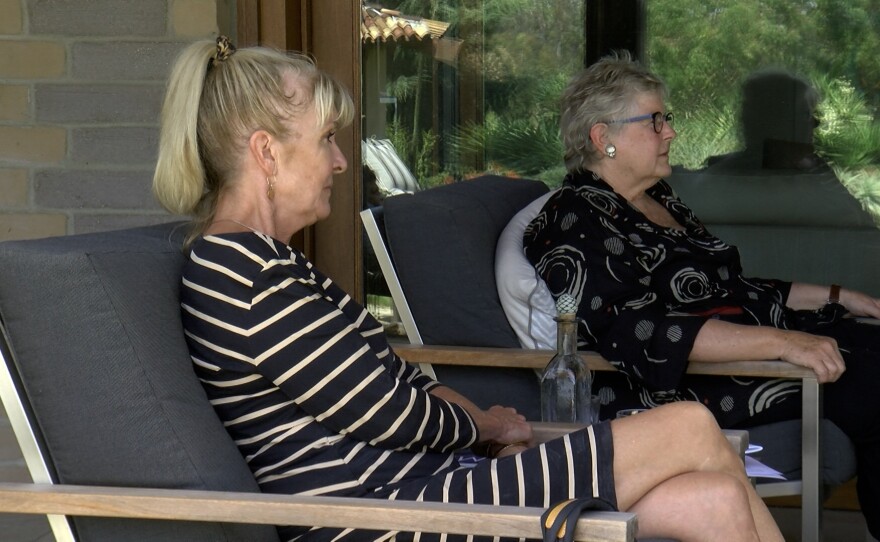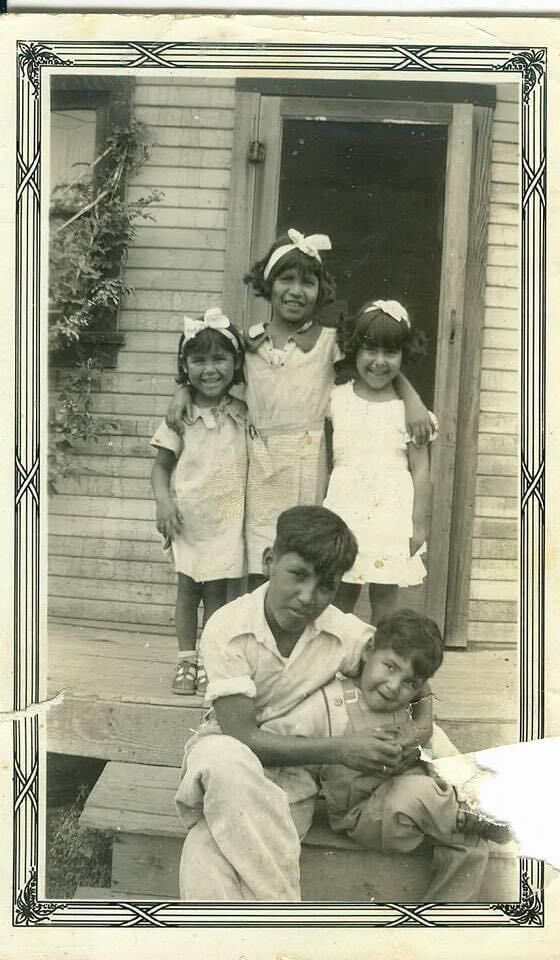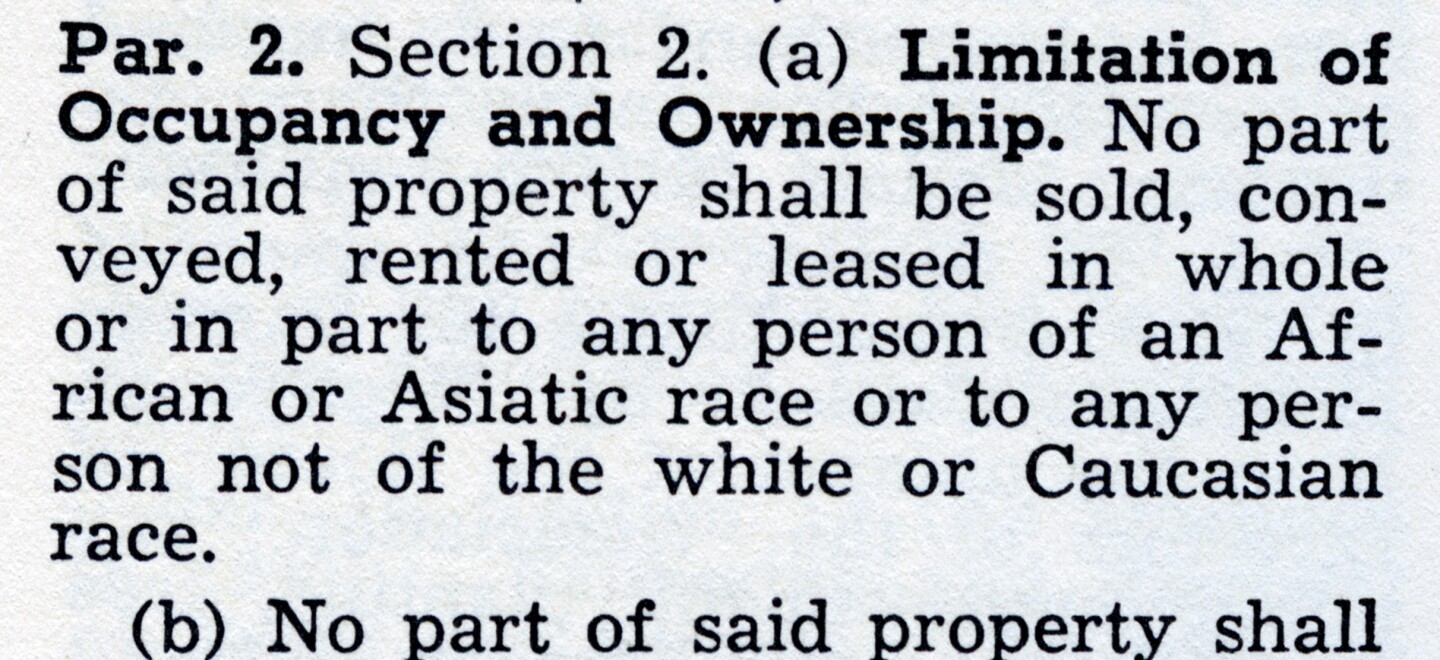Nestled among eucalyptus trees in North San Diego County and known for its golf course, horse trails and palatial estates, historic Rancho Santa Fe is one of the most exclusive and expensive ZIP codes in the United States.
The roughly 10 square mile enclave is one of California’s oldest planned communities -- formally established in 1927 as a refuge for Hollywood royalty and other members of that era’s 1 percent.
Central to its founding was the Rancho Santa Fe Protective Covenant, which was adopted in 1928 and detailed both architectural and racial restrictions to ensure it would be a whites-only paradise.
The covenant read:
"No part of said property shall be sold, conveyed, rented or leased in whole or in part to any person of an African or Asiatic race or to any person not of the white or Caucasian race."
The racial restrictions were finally purged from the document in 1973, more than two decades after they were outlawed by the U.S. Supreme Court. But Rancho Santa Fe’s protective covenant is still the community’s primary governing document. And though the outwardly racist language is gone, the connotations remain.
“What’s unique about Rancho Santa Fe’s covenant is that it went beyond just restricting the deed itself as to who a seller might sell to, but also restricting a host of many activities or even types of architecture,” Phoebe Young, author of "California Vieja," said. “By marrying both racial restrictions with architectural restrictions, I think made it pretty unique at the time.”

Built on a myth
Known for its arches, adobe and red tile roofs, Rancho Santa Fe’s Spanish Colonial architecture was rooted in an white fantasy of California’s past, according to Young and other historians.
“It was an idealization of a particular period that ironically seemed built on both the indigenous and Mexican history of the region, but in a way that served to exclude the contemporary — meaning in the 1920s — residents who themselves are indigenous, Mexican American, or Mexican nationals,” Young said.
In order to achieve this myth, Rancho Santa Fe developers obscured the area’s history. Developers advertised that the king of Spain had granted the former owner of the terrains, Don Juan Maria Osuna, with the land, instead of the reality, which was that it was bequeathed to the Osuna family by the Mexican government.
This allowed future residents to imagine themselves as the descendants of Spanish Dons ruling over their large estates. “Those things are built in those ideals of what that suburban ideal is,” Young said. “You can have your kind of Spanish fantasy past, but still exist within a homogenous Anglo neighborhood.”
More than a century later, Rancho Santa Fe remains an unincorporated area that is managed by the Rancho Santa Fe Association. And locals and real estate agents still refer to the area governed by the protective covenant as “The Covenant.”

Mary Bills, a Rancho Santa Fe resident, and her friend Janet Lawless Christ, a local real estate agent, want to see the community take more steps to address its racist past.
They are behind an effort to try to change the name of Rancho Santa Fe’s governing document, which they feel is discriminatory, and encourage people to stop referring to the area as “The Covenant.”
“We’re just asking that they (the association) address these codes word that are still sending signals of discrimination — by using these words, by having this document — and people of good will when they know something is wrong and don’t change it, then I think there’s a problem,” Bills said.
“I would guess that 80% of the people who live in the covenant don’t understand that yet ... We should know that the covenant had restrictive racial bias when it was written. We should acknowledge that.”Janet Lawless Christ, Rancho Santa Fe resident
Both Bills and Lawless Christ say they want to start a conversation about a history that they don’t think a lot of people that live in Rancho Santa Fe even know about.
“I would guess that 80% of the people who live in the covenant don’t understand that yet,” said Lawless Christ. “We should know that the covenant had restrictive racial bias when it was written. We should acknowledge that.”
The community prides itself on its architectural history. The association website tells of Bing Crosby’s famed clambakes at the golf club, but it never mentions anything about racial restrictions.
“There’s an elitist message being sent and people are protective of it,” Bills said.
The area’s exclusivity and racial boundaries are still palpable to many. Rancho Santa Fe remains 83% white, according to the U.S. Census.
Getting a 'second look'
“I still feel that sense of exclusivity,” Lisa Montes said.

Montes is a fourth-generation daughter of La Colonia or Eden Gardens, the racially segregated community created to house the mostly Mexican American workers needed to maintain Rancho Santa Fe’s estates. Her uncle worked as a gardener in Rancho Santa Fe and her aunt as a housekeeper.
“Eden Gardens was a racially segregated community. It was developed that way specifically for Mexican Americans,” said Montes, who is also the museum curator of the Solana Beach Civic and Historical Society and vice president of La Colonia Community Foundation.
While Rancho Santa Fe was being built into modern Spanish-style mansions, the residents of La Colonia first had to live in tents before finally getting the materials to build their own homes.
Growing up she always heard stories about the racism that her family encountered when they left the boundaries of La Colonia.
Her cousin was turned away from getting a haircut in Solana Beach because of the color of his skin. Another cousin, Robert “Chuckles” Hernandez, was falsely accused of stealing a white man’s radio as a young boy. Montes says a local sheriff's deputy beat him.

Despite these experiences, Montes says the residents of East Garden formed a tight-knit and vibrant community even as it battled increased gang activity in the 1980s and '90s. But now the community is starting to change.
Money has begun to pour into Eden Gardens as property values in Solana Beach and nearby Del Mar skyrocket. Montes is worried that the community that made La Colonia so magical is disappearing due to gentrification.
“This is now prime real estate. Before it wasn’t considered prime real estate, it was considered Eden Gardens, you know, less than in terms of property where you would want to live,” Montes said. “Now they want to scoop it up and build their mansions on it.”
Montes understands that the neighborhood is changing, but she’s afraid the history of the Mexican Americans that made Eden Gardens will be forgotten. It’s why she keeps the history alive through historical tours for local college students and planning the annual Eden Gardens’ Dia de Los Muertos event.
But while the racial boundaries that enclosed Eden Gardens are quickly fading, for Montes, the barriers around Rancho Santa Fe remain.
“If I went to some of the boutiques in Rancho Santa Fe, I would get a second look,” Montes said. “And it’s the looks that you get from people, that second look like, ‘who are you?' It’s just something you notice.”
She may be able to live there and even shop there, but she still has to contend with the hauntings left behind by white-only spaces.

A way forward
It’s this legacy that Bills and Lawless Christ want to address. They’ve asked the Rancho Santa Fe Association to consider their proposal, but haven’t gotten much traction.
In reporting this story, KPBS reached out to several people in Rancho Santa Fe who declined to speak on the issue, including a prominent real estate agent and members of the Rancho Santa Fe Historical Society.
Christy Whalen, the manager of the Rancho Santa Fe Association, told KPBS in a written statement that: “All homeowners associations have covenants” and that “if there is a story here it is that the Rancho Santa Fe Association was ahead of the curve” by removing the language in 1973.
She further elaborated that "covenant" is a term meaning an agreement and does not have racial connotations and that even if changes were made the use of the word covenant would still need to be invoked.
Bills and Lawless Christ aren’t surprised by reactions like Whalen’s.
“I’ve heard people saying, 'just stop stirring the pot.' What pot are we stirring and why do we have to stop stirring the pot? We need to continue,” Lawless Christ said. “We have not reached a place where there is not a racially charged connotation to the word 'covenant.' By removing the word, we’re making a step in the right direction.”
Neither Bills nor Lawless Christ think changing the name will address any inequities or radically change the community. But they believe openly acknowledging Rancho Santa Fe's past will enable it move forward as a more inclusive place.
Like Lisa Montes’ quest to preserve Eden Gardens’ unique history amidst gentrification, Bills and Christ are engaged in a similar battle — a battle over what gets remembered, who gets to live where and why it still matters today.







